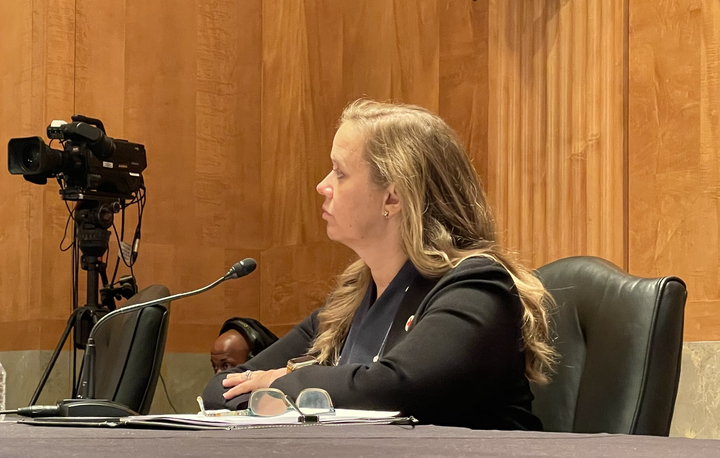WASHINGTON — Disaster relief organizations voiced their dissatisfaction with what they described as a shortfall of cooperation from the Federal Emergency Management Agency in mitigating climate-driven natural disasters during a Senate hearing on Wednesday.The Senate Homeland Security and Governmental Affairs Committee delved into a potential plan for addressing the effects of natural disasters, which are happening with increasing frequency.
“Let FEMA be the coordinator of federal resources instead of forcing us at the state level to fumble our way through the federal government,” said Sima Merick, president of the National Emergency Managers Association. “Federal disaster programs and processes are too complex, they’re slow, sometimes bureaucratic and in many cases can impede state and local governments best efforts to improve outcomes for individuals and communities.”
According to Jerry Hancock, executive director of the Michigan Stormwater-Floodplain Association, only a third of the nation’s floodplains are mapped, and the existing maps the federal government has provided are missing critical information needed to identify flood hazards.
Hancock said the federal government has been slow to provide these maps and that they are often out-of-date at the time of their use.
He went on to discuss the importance of developing and maintaining a local hazard mitigation plan. His organization recently received a $4 million FEMA mitigation grant to fund their next plan update. However, he said he disapproved of what he described as the unequal funding approach applied across the different communities. He said those communities as “not so lucky,” after not receiving any funding.
Jennifer Pipa, vice president of the disaster programs at the American Red Cross, shared Hancock’s sentiments and also zeroed in on using data to manage their response activities. At the American Red Cross, a social vulnerability index allows their organization to monitor communities that are more vulnerable prior to a disaster. This index tracks low-income, low-income communities of color and individuals with disabilities. Through this data, disaster relief organizations are able to determine where to direct their attention.
“The number of major climate-related disasters has increased six-fold in the past 40 years,” said Pipa. “By 2030, we anticipate responding to a significant climate emergency every 10-to-12 days. A near constant state of response leaving our communities in a chronic state of recovery.”
The American Red Cross’ vice president said that most families and individuals they have helped often have little-to-no resources prior to the disaster. Pipa emphasized that with help at the federal level, they are better able to connect with the communities in need of help.
“Climate change isn’t about the number of inches that fell in rain in an hour, it’s not about the category of the storm, it’s not about the acres that burned in a wildfire,” said Pipa. “It’s about a family of five living in their car, it’s about people who were struggling before this disaster ever happened and need more help now.”

